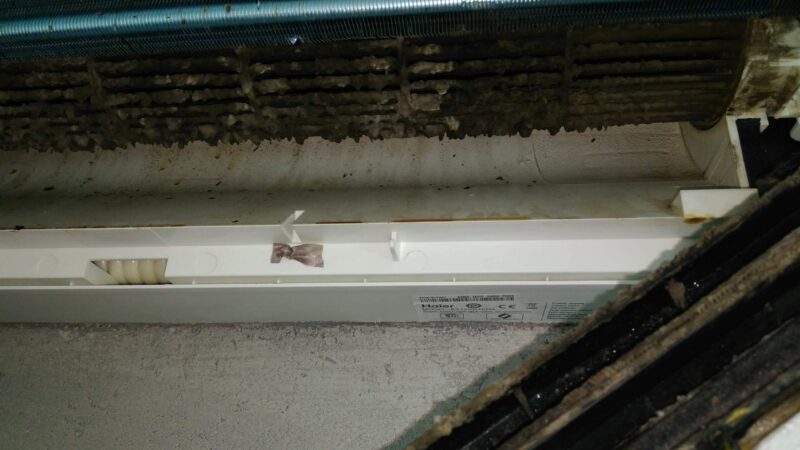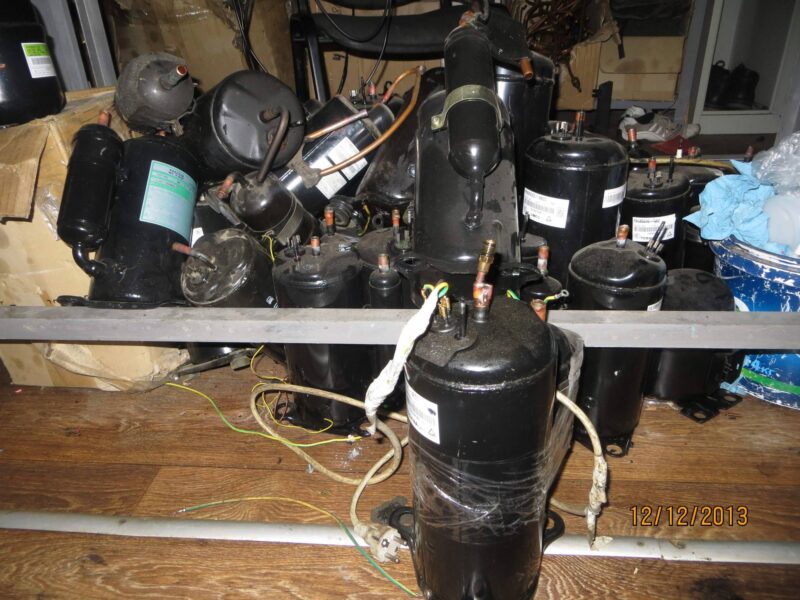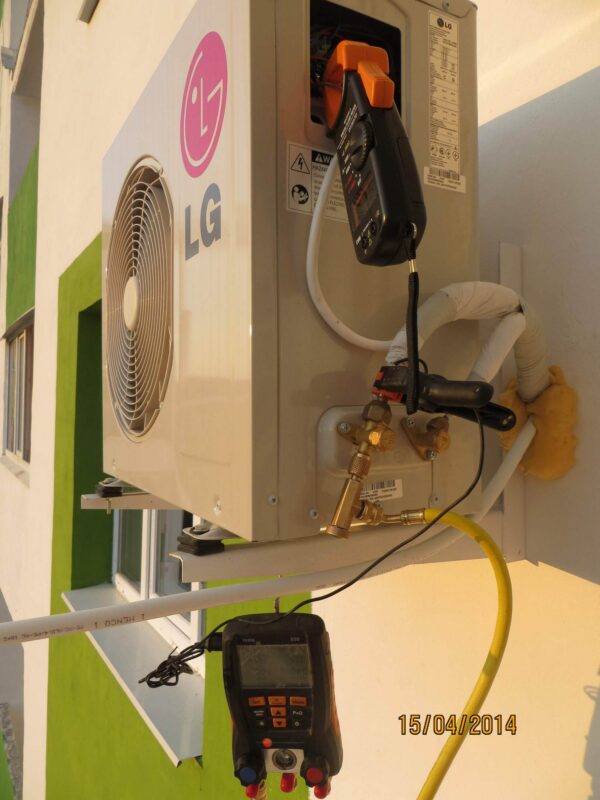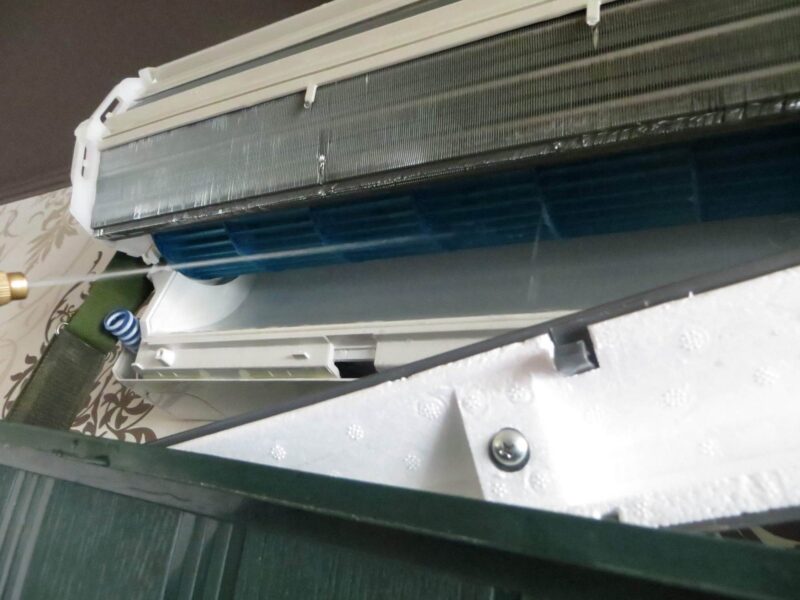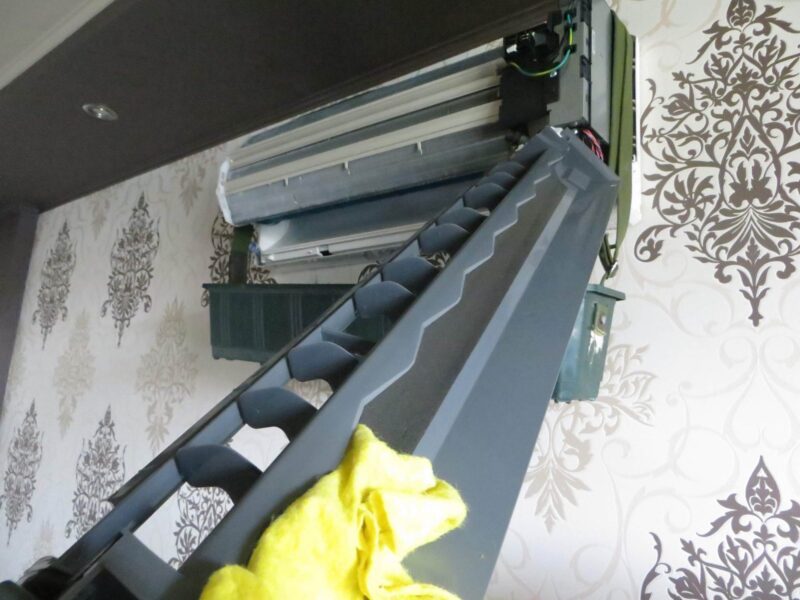FAQ
Installing air conditioning in a block of flats - Do I need a permit?
Before choosing a particular device, it is advisable to ascertain whether its installation in the location you are planning will be possible at all and, if so, what requirements it will have to meet.
It will be necessary to adopt an appropriate resolution by the cooperative, which will determine where the installation of the device is possible.
On the basis of the adopted resolution, the administration can grant permission for the installation of air conditioning. As you can guess, the whole process can take several months. The situation will turn out to be much simpler if the administrator has already gone through such a procedure in the past. So if you are not the first person to apply for the possibility of installing an air-conditioning unit, you have the chance to get approval within a few days or even a few hours.
In many cases, installing an air conditioner will prove either impossible or complicated. Owners of premises in historic buildings, for example, should forget about cooling their rooms in this way. Their enthusiasm will certainly be curbed by the conservation engineer.
No consent - What to do?
If the installation of the unit would infringe on the facade of the building, permission is usually not granted. On the other hand, there should not be a problem with placing an air-conditioning unit on a balcony, although here, too, there are usually various restrictions connected, among others, with the obligation not to exceed a certain noise level.
If you do not agree to an air-conditioning unit, it is best to start by talking – sometimes it is enough to present other arguments or a better presentation to make the resistance disappear.
If this does not help, the decision can be appealed under the terms of the Cooperative Law (Article 32) and the cooperative’s statutes.
Can I carry out my own service on the air conditioner?
The answer is – rather not, and if the air conditioner is under warranty – definitely not.
The user simply does not have the knowledge of the principles of refrigeration operation and the necessary experience to undertake this kind of action. Any attempt to get into the components of the unit will most often end up damaging them. It is better to leave this job to a professional – it will come out faster, better and cheaper.
The only thing we recommend that you do yourself is to clean the mesh filters. This can be done e.g. once a month, without waiting for a service technician. It is a simple matter – the filters are located under the front panel and are easily removed. Simply clean the collected dust with a brush and rinse with clean water. You can additionally use a de-funging fluid or foam, which is used for car air-conditioning. Remember to rinse well with water – chemical residues may cause an unpleasant smell.
Are repairs carried out during the service?
No. Unless minor – such as changing batteries or something similar.
Standard service includes air conditioning cleaning and testing. Also, if necessary, we diagnose simple faults.
More advanced diagnosis requires more time, knowledge and tools. So, an additional charge is made for such a diagnosis.
Repairs usually require a lot of time, knowledge and tools. To this, the cost of materials and spare parts should be added.
Example application: ”air conditioner is cooling worse”. Air conditioning cleaning must be performed in order to diagnose correctly. After cleaning, we start diagnosing the fault and this is where the service ends. Most often, the air conditioner cools less well due to a lack of refrigerant. Such a repair can take anywhere from a few hours to several days. Of course, in this case a repair charge is levied, the amount depending on the time spent, the number of journeys, the cost of materials and spare parts.
How often should air conditioning service be done?
This depends on the conditions in which the unit operates and the manufacturer’s requirements.
1 time a year
Once a year, an air conditioner in the home or office can be serviced, provided it is not used much and only in cooling mode. This is generally the case for customers who are concerned about the efficiency of equipment not covered by the warranty. This frequency can also be applied to new units, if the manufacturer does not require servicing more than once a year. A “full” service is recommended in the autumn – September or October.
2 times a year
In spring (pre-season) and in autumn (post-season). It is recommended for discerning customers who care for both the efficiency of the unit and the purity of the air. It can be an air conditioner in the home or office, used in summer and winter (in heating mode).
Why so often? In summer, during active operation of the air conditioner, there is constant contact between dust and water, condensing on the exchanger in the indoor unit. This combination creates a very good environment inside the air conditioner for various types of fungi and bacteria.
The seasonal check-up in autumn is full/extended (longer than the spring check-up for this) but generally consists of a decent cleaning and de-fungalizing of all parts of the air conditioner, so that you don’t breathe in dangerous microbes for six months until the next service. This is especially important for allergy sufferers and children. It is best to perform the service in September-October.
The seasonal service in spring, after the winter shutdown, of course includes and air conditioning dehumidification, but generally consists of checking the efficiency of the equipment. It is a check-up, preparing the A/C for the hot season. Ideally, the service should be performed in April or May.
In addition, very often when buying an A/C unit, service every 6 months is a manufacturer’s requirement and the continuity of the warranty period depends on it.
At least twice a year and more often
Such frequent service is required for units that operate in harsh environments – e.g. shops, warehouses, production, hairdressing salons.
Another category is air conditioners operating in public places – hospitals, clinics, offices etc. In these cases, frequent and thorough cleaning is required.
In server rooms or machine rooms, on the other hand, in addition to cleaning, the faultlessness of the air conditioner is important. A delay in service and the resulting fault can lead to a breakdown of the server electronics, which will have a huge cost impact.
How often do you have to top up the air conditioning with refrogerant?
There is no such thing as periodically topping up the air conditioning system with refrigerant. If there is a lack of factor – this is a major malfunction, the repair of which needs a lot of time and the knowledge of the service technician.
You can’t just add factor – it’s against the law. The service company can get a large fine and the Technical Inspection Authority can cancel the F-gas certificate.
So, for example, it can take up to two days to repair a leak in a simple domestic splice.
First you have to diagnose the lack of gas – sometimes there are other faults with similar symptoms. Then find the leak (and this is the most difficult) and fix it. Next, a leak test is necessary – the system is filled with nitrogen remaining at high pressure for 24 hours. Only after the leak has been found can the air conditioner be filled with refrigerant.
With a good installation, all the refrigerant will remain in the system until the end of the air conditioner’s useful life. And this means that the air conditioner will not be exposed to the most serious and costly repairs. Because through the refrigerant with oil circulating in the system, the compressor (the most expensive part of the air conditioner) cools down and lubricates itself. So that it is not worth saving on the installation of an air conditioner, the work of a good professional costs money. You can even choose a cheaper unit and it will work reliably for 10-15 years with good installation. Conversely, you can buy top-of-the-range equipment and save on installation – you may find that in a year’s time the A/C is due for replacing.
What does the air conditioning service include?
Cleaning the indoor unit.
The first step is to clean all the components of the unit – filters, casing, fan, exchanger, louvres, condensate tray. Cleaning is performed with water and cleaning agents.
De-fumigation.
At this stage, all previously cleaned components should be treated with a de-fumigation agent. Special attention is focused on cleaning the exchanger and
This is where dust comes into contact with water and where most fungi collect.
If necessary, we use a steam generator. At a temperature of about 100ºC, most bacteria are killed.
Cleaning the outdoor unit.
The outdoor unit obviously does not need de-fumigation, but it is exposed to dust contamination from the street and also needs regular cleaning. A heavily soiled unit can cause serious breakdowns and result in the replacement of the entire air conditioner. To clean the housing, exchanger and fan, we use a special cleaner that can dissolve the strongest dirt.
Checking the refrigeration system for leaks.
It is also very important to check the refrigeration system (we check for leaks and the most important operating parameters).
Checking the correct operation of the unit.
At this stage, we check the air conditioner in its various modes, its efficiency, check the condensate drainage system and electrical connections.
When is better to do air conditioning service - autumn or spring?
If the device is only used in summer – definitely in autumn!
Why? When operating the air conditioner in summer cooling mode, condensate forms on the exchanger of the indoor unit, which collects in the condensate tray and is then discharged outside the building or into the sewerage system. This, combined with the high ambient temperature, creates the perfect conditions for the proliferation of microbes and fungi.
This is why a full service is carried out on the unit in autumn – above all, a thorough cleaning and de-fungification is carried out.
We also recommend a spring service, which generally consists of preparing the unit for the season, i.e. checking the correct operation of the various modes or checking the proper functioning of the condensate drainage system. In addition, of course, we carry out – although not as extensively – de-fumigation of filters, the exchanger of the indoor unit and the condensate drainage system.
What about service if the air conditioner is used all year round?
In this case, we recommend a full service in autumn and spring – preferably in September/October and April/May.
Are the air conditioners sold already filled with Freon?
Air conditioners are sold already filled with refrigerant, but it is not always Freon in the traditional definition of the word. The term “Freon” is a trade name for a group of chemical compounds, many of which have been phased out due to their harmful effects on the ozone layer and global warming.
Modern air conditioners typically use refrigerants with much lower ozone depletion potential (ODP) and global warming potential (GWP) than traditional CFCs (such as R-22). The most common refrigerants today are:
R-32: This is a refrigerant with a lower GWP than R-410A, often used in new air conditioners.
R-32 (difluoromethane) is gaining popularity as an environmentally friendly alternative to older refrigerants such as R-410A and R-22. It has a number of advantages and disadvantages that are worth considering before choosing an air conditioner that uses it.
Advantages of R-32:
– Lower Global Warming Potential (GWP): This is the most important advantage of R-32. It has a much lower GWP than R-410A (675 vs. 2088), which means it contributes to a smaller greenhouse effect in the event of a leak. This is a key factor in terms of climate protection.
– Higher energy efficiency: Air conditioners using R-32 often have higher energy efficiency than those with R-410A. This means lower electricity bills and less energy consumption.
– Simpler recycling system: R-32 is easier to recycle and dispose of than some refrigerant blends.
– Lower cost: Compared to some other low-GWP refrigerants, R-32 is relatively inexpensive.
Disadvantages of R-32:
– Flammability: R-32 is flammable, although its flammability class is relatively low (A2L). This means it requires special precautions during installation, service and disposal. Installers must have proper training and licensing.
– Higher operating pressure: R-32 operates at a higher pressure than R-410A, requiring higher strength components.
Conclusion:
R-32 is a promising refrigerant, offering significant environmental improvements over older technologies. Its lower GWP and higher energy efficiency are its main advantages. However, its flammability requires installers to take special care and proper training. Before purchasing an air conditioner with R-32, it is worth making sure that the installation will be carried out by a qualified F-gas certified company. In the long run, the environmental and economic benefits outweigh the disadvantages associated with its flammability, provided proper safety procedures are followed.
R-410A: Although still in use, its GWP is higher than R-32, and its use is gradually being reduced.
R-1234yf: Used in some air conditioners, it has a very low GWP.
Natural refrigerants: natural refrigerants such as propane (R-290) or ammonia (R-717), which have zero or very low GWP, are increasingly being used.
So, although the air conditioner comes with a factory-filled refrigerant, it is no longer usually Freon in the classic sense, but rather more modern and environmentally friendly alternatives. It is always a good idea to check the technical specifications of a particular air conditioner model to know the type of refrigerant used.
What are the latest regulations on air conditioning installation in Poland?
In Poland, there is no unified, comprehensive law regulating the installation of air conditioning. The regulations for installation derive from various legal acts, and their interpretation can be complex. The most important legal aspects are:
- Construction Law: This is the basic piece of legislation that sets the rules for all construction work, including air conditioning installation. Depending on the scale of the work (e.g., whether it requires interference with the structure of the building), a building permit may be required, a notification of intent to carry out the work, or just information. The specific requirements depend on the particular case and interpretation of the regulations.
- Regulations of the Minister of Infrastructure: there are regulations that specify the technical requirements for installations and technical equipment in buildings, including air-conditioning installations. They concern fire safety, protection against electric shock, ventilation and sound insulation requirements, among others.
- Environmental regulations: The installation of air conditioning is also subject to environmental regulations, particularly in the context of the refrigerants used. Factors with high ozone depletion potential (e.g., R-22) are banned, and there are increasing restrictions on high GWP (Global Warming Potential) factors. Installers must comply with regulations on the proper disposal of refrigerants.
- Health and safety regulations: Health and safety regulations must be followed during air conditioning installation to ensure the safety of both installers and building occupants.
- Regulation of the Minister of Climate and Environment on fluorinated greenhouse gases: This regulation governs the trade, use and disposal of fluorinated greenhouse gases, which are often used in air conditioning. Among other things, it introduces certification obligations for those handling these gases.
In practice: For most air-conditioning installations in residential buildings, approval from the estate administration is sufficient.
The question of the administration’s approval for the installation of air conditioning depends on a number of factors, most importantly on the type of building (apartment block, townhouse, public building) and the rules and regulations of the housing community or building manager. There is no clear answer as to whether consent is always required.
Situations in which the administration’s consent is usually required:
- Multi-family buildings (apartment blocks, townhouses): In most multifamily buildings, the installation of air conditioning requires the consent of the administration or housing community. This is justified on aesthetic grounds, to protect the facade of the building, and for potential noise or leakage problems. Consent is usually given in the form of a resolution of the housing community or a decision by the administrator.
Historic or conservation buildings: In such buildings, the installation of air conditioning requires not only the approval of the administration, but also the permission of the preservationist. The requirements for aesthetics and installation are much stricter in such cases.
Where is the best place to buy an air conditioner?
There is no one-size-fits-all answer to the question of where best to buy an air conditioner. The best place will depend on your individual needs and priorities. Consider the following options and their advantages and disadvantages:
- Large retail chains (e.g. Media Markt, RTV Euro AGD, Leroy Merlin):
Advantages: Wide selection of models from different manufacturers, often attractive promotions and the possibility of taking advantage of installments, easy access to information about products (descriptions, reviews).
Disadvantages: Less specialization in air conditioning, less detailed knowledge in employees, possibility of problems with warranty and post-warranty service.
- Online stores:
Advantages: Wide selection, ability to compare prices, often lower prices than in stationary stores, access to reviews of other users.
Disadvantages: No opportunity to see the air conditioner before purchase, risks associated with delivery and possible damage in transit, possibility of problems with warranty service.
- Specialized air conditioning companies:
Advantages: A lot of knowledge and experience in the air conditioning field, professional advice on choosing the right unit, comprehensive service including installation, warranty and post-warranty service.
Disadvantages: Prices can be higher than at large chain stores, smaller selection of models (they tend to focus on specific brands they specialize in).
- Air conditioner producers:
Advantages: Buying directly from the manufacturer can guarantee the originality of the product and a full warranty.
Disadvantages: It may be more difficult to find an authorized distributor, the price may be higher, usually manufacturers do not sell equipment to the end customer and sell through a distribution network.
What to consider when choosing where to buy:
- Model selection: Check whether models are offered that meet your requirements.
- Customer reviews: Review other customers’ reviews of a particular store or company.
- Warranty and service: Make sure a full warranty is offered and warranty and post-warranty service is available.
- Installation: Check if the store or company offers installation service and if it is included in the price.
- Advice: Choose a place where you get professional advice on choosing the right air conditioner.
In summary, the best place to buy an air conditioner will be the one that provides you with the best value for money, professional advice and comprehensive service, including installation and service.
What are the most often mistakes made when installing air conditioning?
The most common mistakes made when installing air conditioning involve various aspects, from planning and design, to the installation itself and subsequent maintenance. Here are some of them:
- Design and planning phase:
- Poor choice of air conditioner power: This is one of the most common mistakes. An air conditioner that is too weak will not be able to effectively cool the room, while one that is too powerful will operate inefficiently and generate unnecessary costs. Proper selection taking into account the size of the room, its insulation, the number of windows, the number of people and other factors is crucial.
- Improper placement of indoor and outdoor units: A poorly placed indoor unit can cause uneven distribution of cool air, inefficient cooling and even condensation problems. The outdoor unit should be placed in a location that provides adequate ventilation and service access.
- Lack of consideration of building specifics: It is necessary to take into account the specifics of the building, such as the type of insulation, wind direction, sunshine. This affects the selection of power and efficiency of air conditioning.
- Lack of adequate ventilation: Air conditioning should not replace ventilation. Improper connection to the ventilation system can lead to humidity and air quality problems.
- Installation phase:
- Leaks in the system: Leaks in the refrigeration system lead to loss of refrigerant, reduced efficiency and potential damage to the compressor.
- Improper electrical connection: Errors in the electrical connection can lead to unit failure, fire or electric shock.
- Improper mounting of units: Improperly mounted units can vibrate, generate noise and become damaged.
- Lack of pipe insulation: Failure to properly insulate freon pipes leads to energy loss and condensation.
- Unsuitable materials: Using unsuitable materials can lead to corrosion, leaks and failure.
- Improper condensate drainage: Improper drainage can lead to flooding of the room or bad odors from the air conditioner.
- After installation:
- Failure to start up and check the installation: After installation, it is necessary to start up and check the installation for leakage, performance and proper operation.
- Lack of maintenance: Regular maintenance is crucial for the long life and efficiency of the air conditioner. Lack of maintenance leads to faster wear and failure.
Overall: The most common source of problems is lack of experience and knowledge of installers. It is advisable to choose reputable and experienced companies that employ qualified technicians. Before choosing an installer, it’s worth checking references and reviews from other customers. Remember that saving on installation costs can lead to much higher expenses in the future.
Why should you choose an F-gas certified company for air conditioning installation?
Choosing an F-gas certified company for air conditioning installation is extremely important for several reasons:
- Legal compliance: Regulation (EU) No. 517/2014 of the European Parliament and of the Council on fluorinated greenhouse gases (F-gases) imposes a number of regulations on the handling and disposal of refrigerants. Having an F-gas certificate confirms that a company and its employees meet the legal requirements for handling these substances. Lack of certification can result in financial penalties for the company and the customer.
- Safety: refrigerants used in air conditioning can be harmful to health and the environment. F-gas certified companies have the knowledge and skills necessary to handle these substances safely, minimizing the risk of leaks and other dangerous situations. This translates into safety for you and your loved ones.
- Professionalism and knowledge: the F-gas certificate is proof that the company and its employees have received the proper training and are knowledgeable about handling refrigeration systems, including safety rules, proper installation, maintenance and refrigerant disposal. This guarantees a professional service.
- Quality guarantee: F-gas certified companies usually make sure they provide high quality services to maintain their certification. This translates into a greater chance of trouble-free and efficient air conditioning operation.
- Correct disposal of refrigerants: F-gas certified companies are required to properly dispose of used refrigerants, which is important for environmental protection. Improper disposal can have a negative impact on the environment.
- Insurance: F-gas certified companies often have adequate insurance to protect the customer from possible losses in case of damage caused by improper installation or operation of the air conditioner.
In summary, choosing an F-gas certified company is an investment in safety, legal compliance, professionalism and environmental protection. Although it may come at a slightly higher cost, the benefits outweigh the potential savings on companies without certification.
What are the penalties for lack of F-gas certification?
Penalties for lack of F-gas certification in Poland result from the Act of May 15, 2015 on substances that deplete the ozone layer and certain fluorinated greenhouse gases (Journal of Laws 2015, item 882, as amended) and implementing regulations. The amount of penalties depends on the specific offense, and can be imposed on both a company and an individual performing refrigerant work without the appropriate authorizations.
Penalties may include:
- Administrative penalties: This is the most common type of penalty. Their amount varies and depends on the type and scale of the violation. Inspectors can impose penalties for lack of certification, improper handling of refrigerants, lack of documentation, improper disposal, etc. The amount of penalties can reach up to tens of thousands of zlotys.
- Fines for illegal marketing of refrigerants: Placing refrigerants on the market without proper permits and certificates is also subject to penalties.
- Fines for improper disposal of refrigerants: Improper disposal of refrigerants is a serious violation of regulations and can result in hefty fines.
- Fines for lack of documentation: Keeping proper records is mandatory for refrigerant companies. Lack of documentation or improper recordkeeping can result in penalties.
- Prohibition of operations: In extreme cases, in the case of repeated violations or particularly serious offenses, a ban on refrigerant business may be imposed.
The exact amount of the penalty depends on a number of factors, such as:
- The type and scale of the violation: More serious violations, such as illegal refrigerant trafficking, carry higher penalties than minor violations.
- Number of violations: Repeated violations result in higher penalties.
- Cooperation with inspection authorities: Cooperation with inspection authorities and prompt rectification of irregularities can affect penalty mitigation.
Important: The information contained in this response is general in nature and does not constitute legal advice. For precise information on the amount of penalties in a specific case, please consult the applicable laws or consult a lawyer specializing in environmental law. The amount of penalties is subject to change as a result of amendments to the law.






